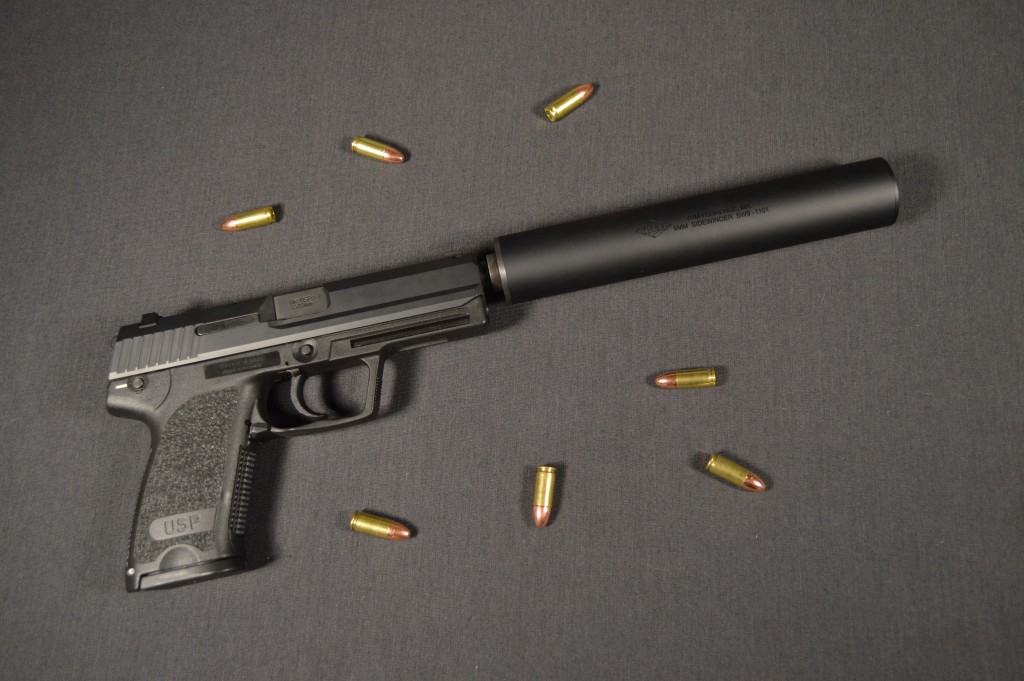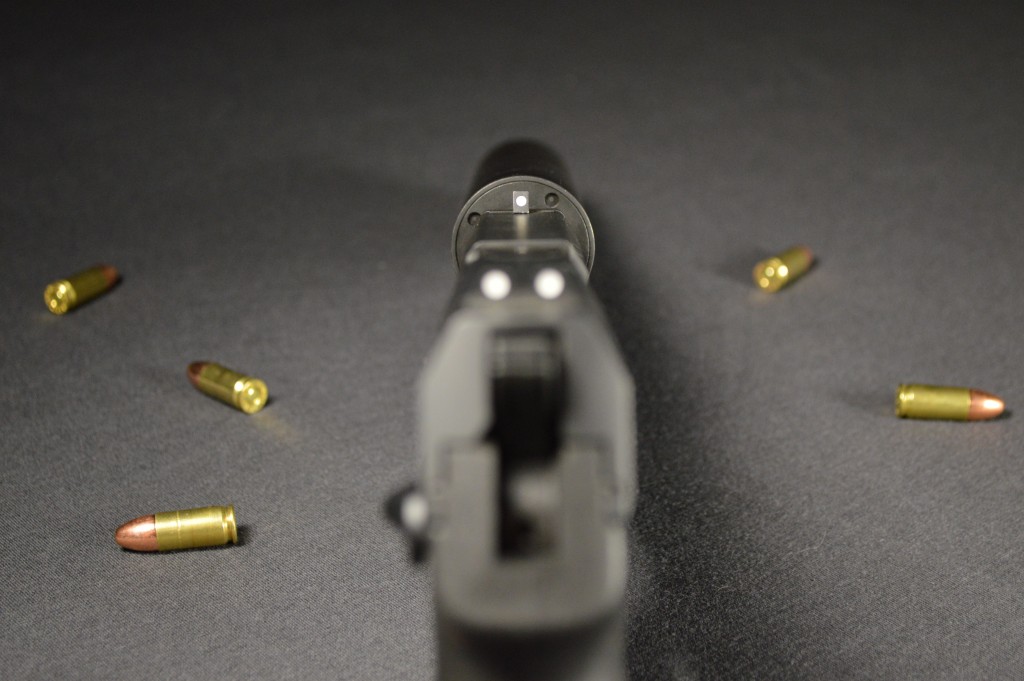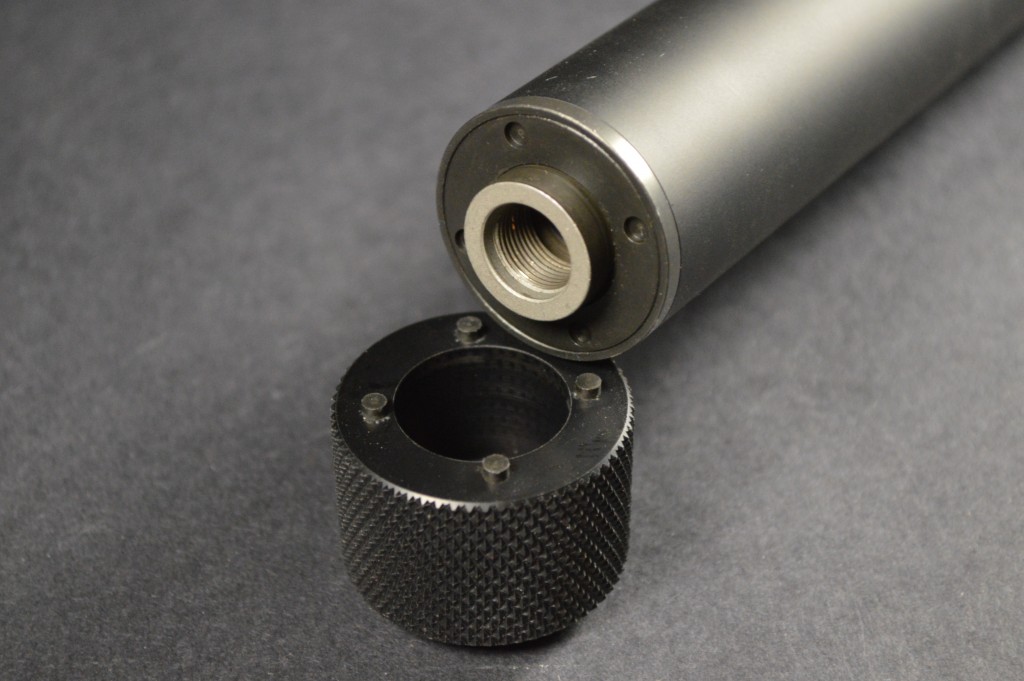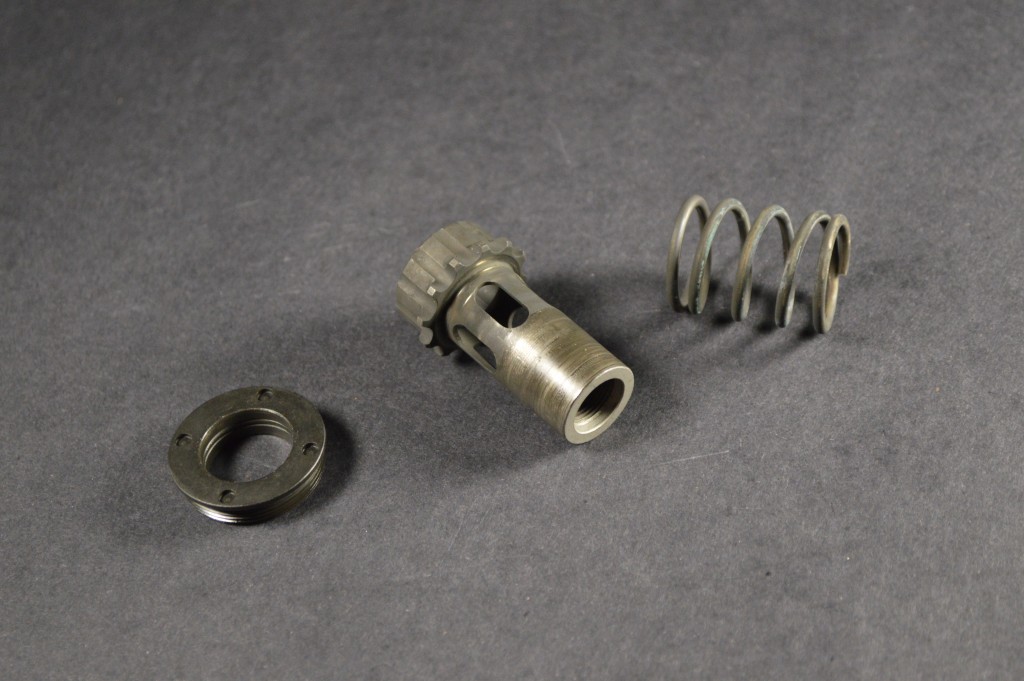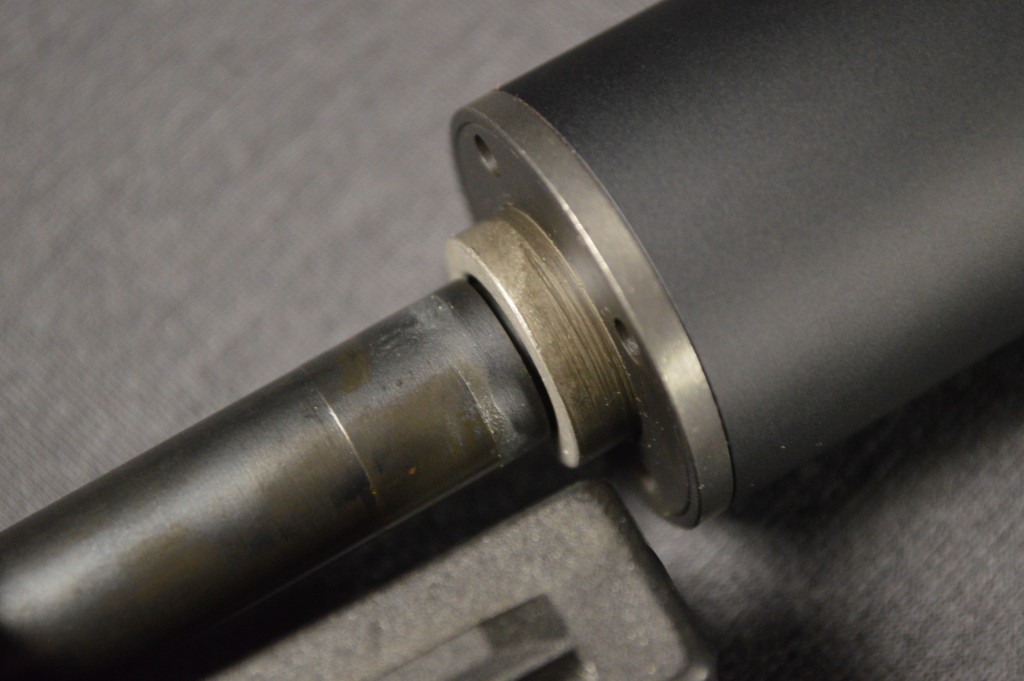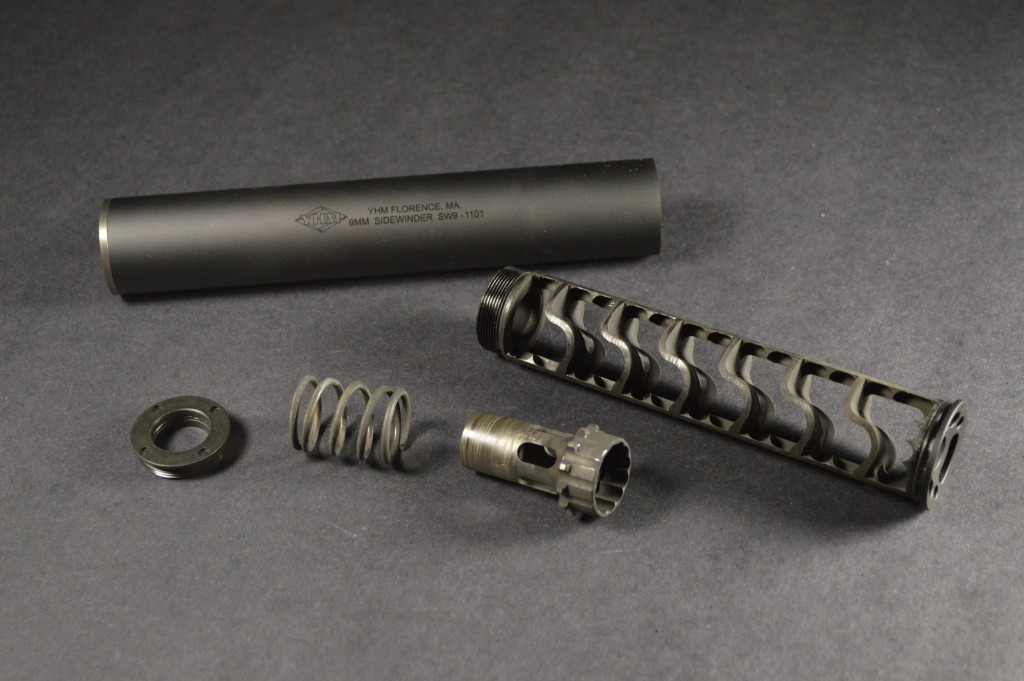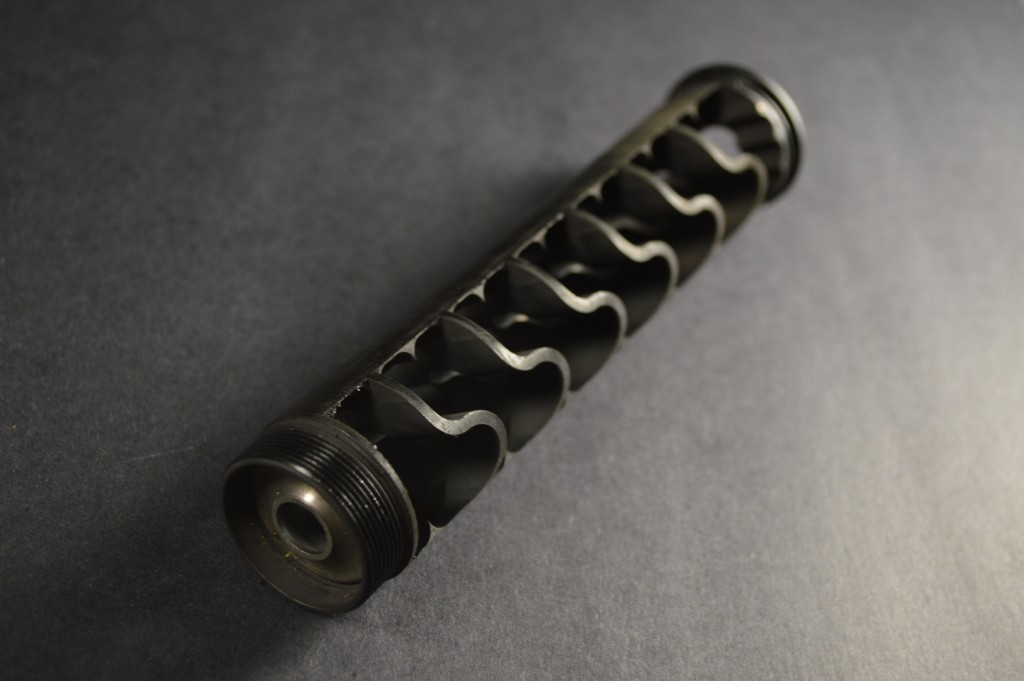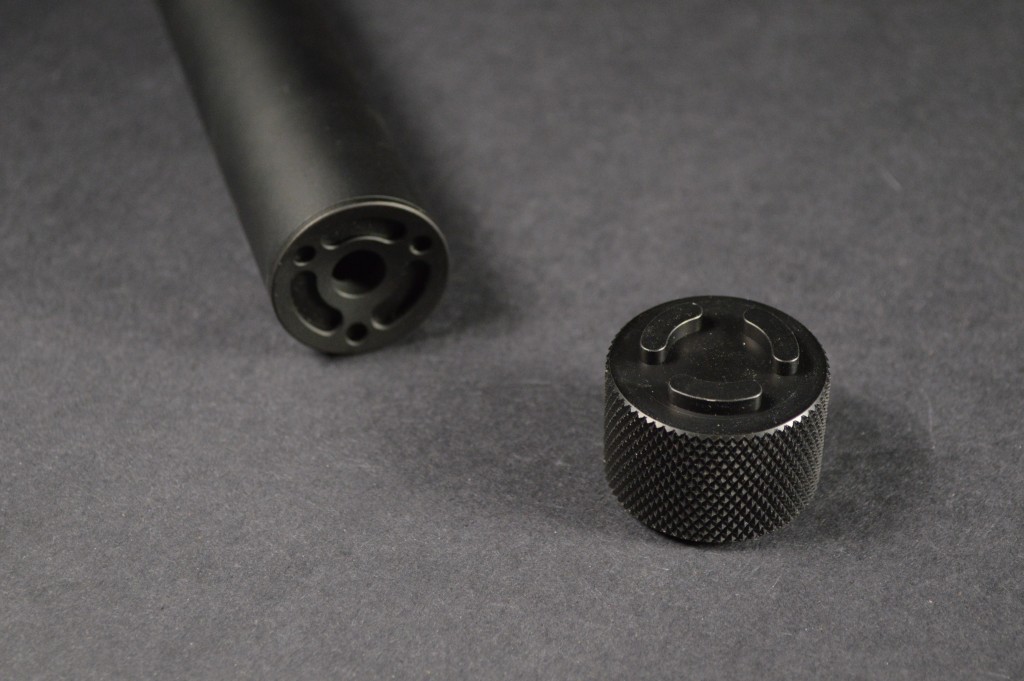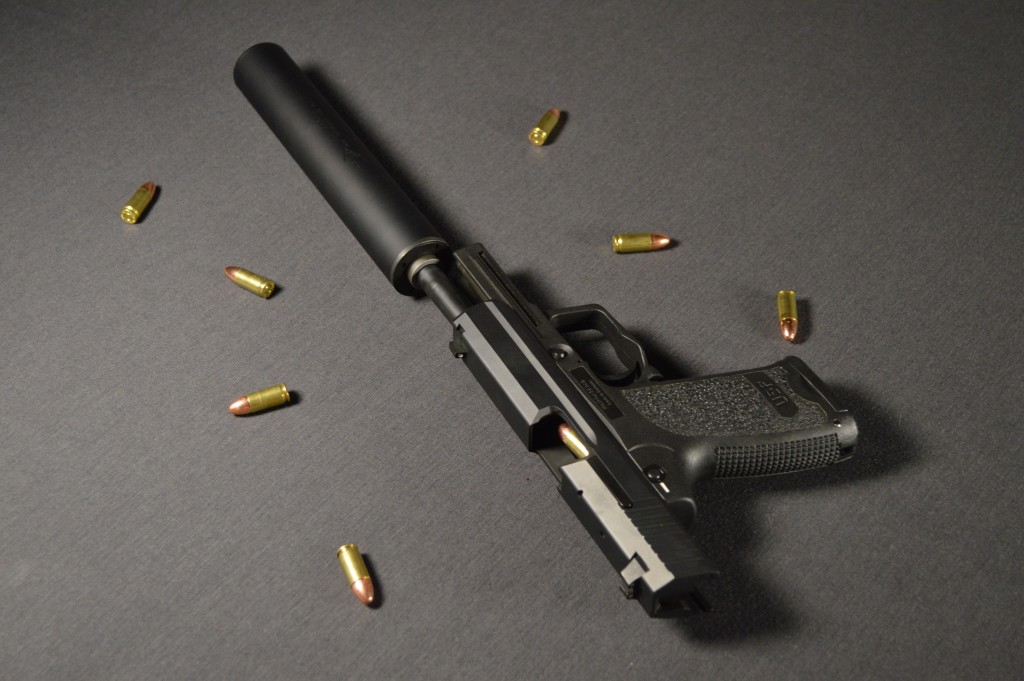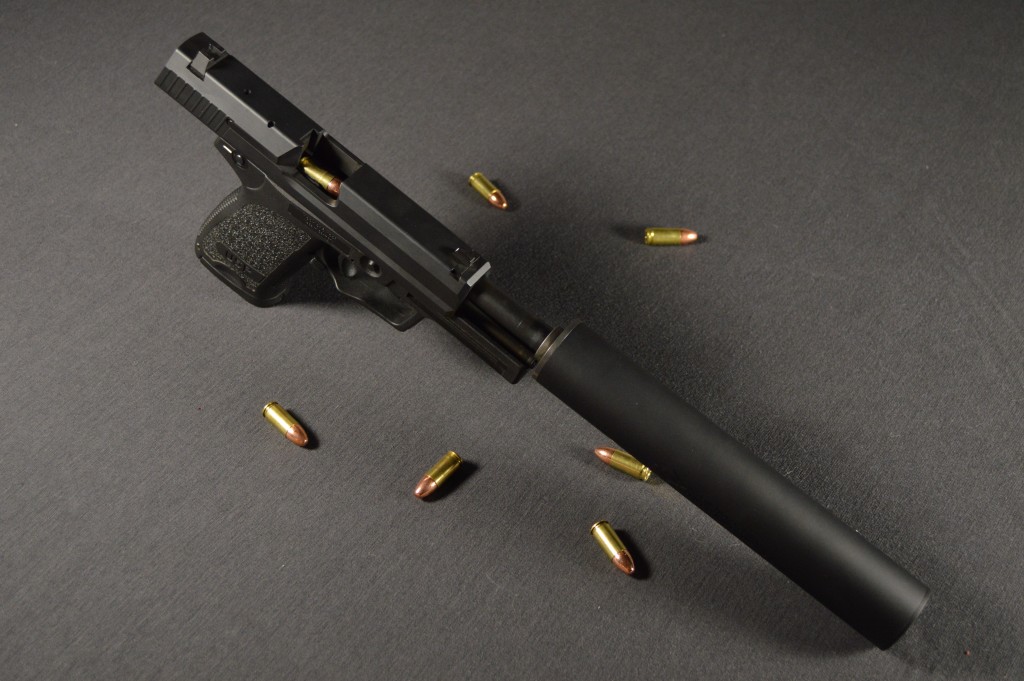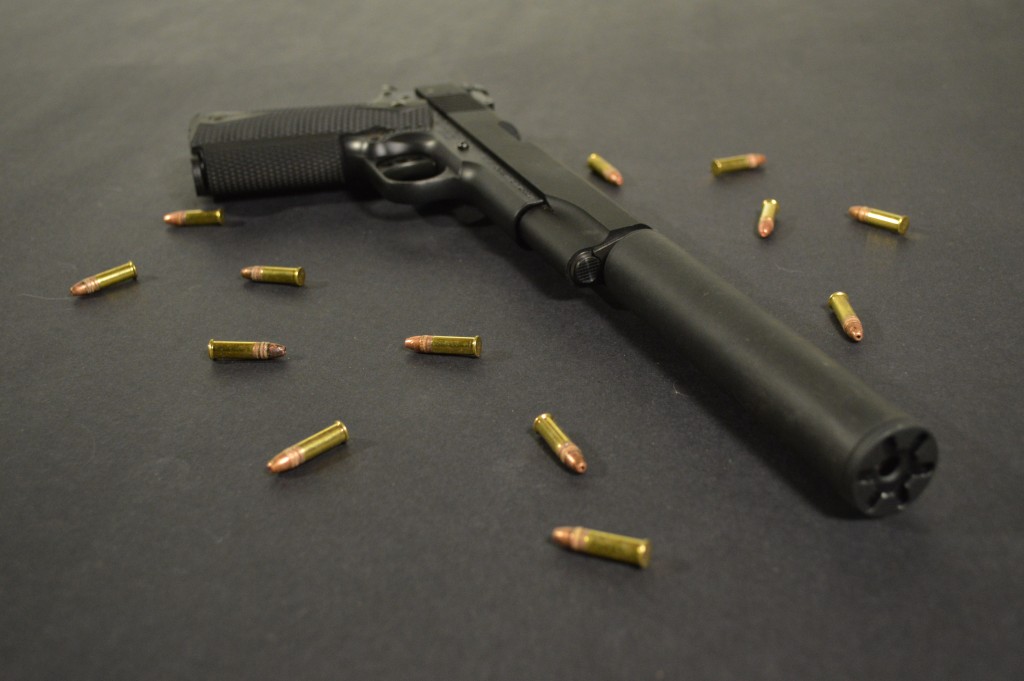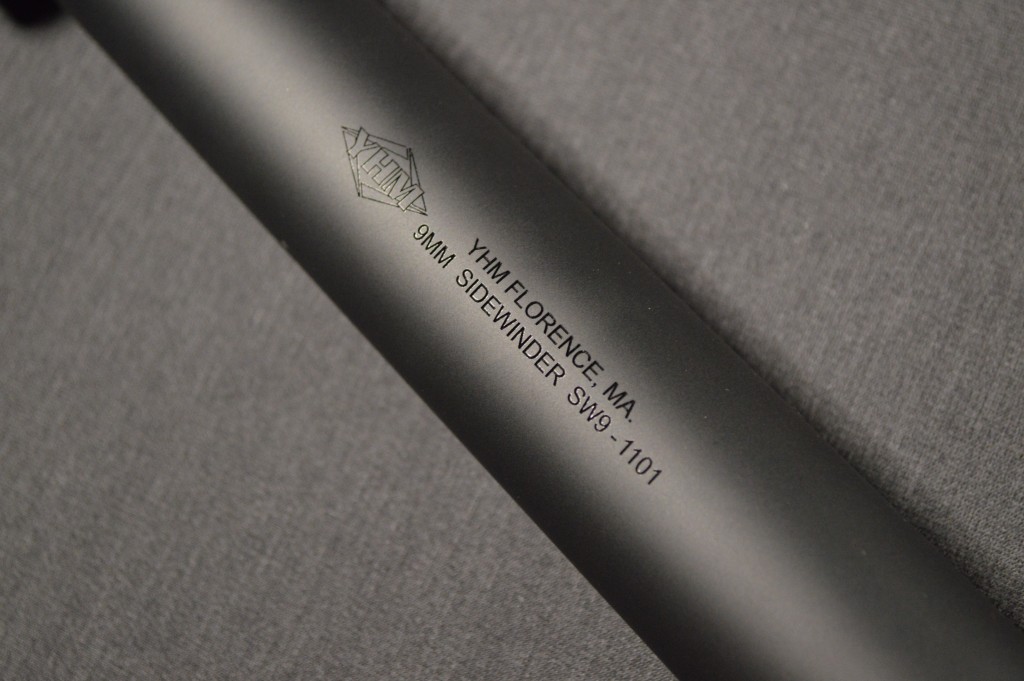Silencer Shop Authority: YHM 9mm Sidewinder Review
Earlier this year, I published a popular article titled 2015: The Year of the Suppressor. In that piece, I endeavored to feature all new suppressors from major manufacturers that would be released in 2015. Unfortunately, my “complete” list was not quite as comprehensive as I initially believed and several manufacturers released silencers in 2015 that were not featured in my preview.
One such suppressor was Yankee Hill Machine’s 9mm Sidewinder. Known for making quality suppressors at highly competitive prices, YHM is a company that impressed me with their Stinger .22 LR suppressor a few months ago. At the same time, it is reasonably well known that YHM’s Cobra pistol suppressors were largely passed up in overall performance almost five years ago by more modern designs. Despite the Cobra’s reputation, my past YHM experience and my regret for ignoring the Sidewinder last January left me pretty excited when the guys at Silencer Shop offered some time with YHM’s new 9mm can. With the silencer in hand, it did not take long to realize that I was dealing with a wholly different snake.
Size and Weight
For a 9mm suppressor, the Sidewinder’s 8” overall length is fairly long, but it is not unreasonable. Similar in size to AAC’s Ti-Rant 9, YHM’s silencer is around 1/2” longer than Griffin Armament’s Revolution 9 and SilencerCo’s Octane 9 HD. Meanwhile, the Sidewinder comes in at 1 3/8” in diameter, which is essentially industry standard for pistol suppressors with only a handful of slimmer, 1 1/4” options available today. Like most of the competition, the Sidewinder obstructs the sight picture when used with factory handgun sights. In terms of overall size, most shooters will find that the Sidewinder is more similar to .45 ACP suppressors than typical 9mm silencers.
While the Sidewinder may run close to .45 ACP suppressors in length and diameter, it is considerably lighter than its larger-bored rivals. According to my scale, the Sidewinder weighs exactly 10 ounces with a piston installed. As such, the Sidewinder is just over two ounces lighter than my SilencerCo Octane 45 and, despite its longer length, is lighter than the Octane 9 and Griffin Armament Revolution 9 suppressors. Two ounces may seem insignificant to some, but the difference is far more noticeable than even I expected. Most of the Sidewinder’s core is aluminum, and the bulk of its weight resides in the piston assembly, so the suppressor feels lighter than your average 10 ounces can when mounted, thanks to its backloaded center of gravity.
Mounts
Like most pistol silencers, the Sidewinder uses a piston system (or Nielsen device) to reliably mount to common handguns. In terms of the overall operation, YHM’s design is fundamentally the same as similar units from other leading manufacturers. The unit consists of a threaded 17-4 stainless steel piston (available in 1/2×28, 1/2×36, and M13.5×1 thread pitches), a spring, and a retaining ring that screws into the rear of the suppressor’s tube. For easy disassembly, the ring features four divots that mate with pegs on the supplied take-down tool. While I have found a point of impact shift to be mostly inconsequential with quality pistol suppressors, the Sidewinder can be indexed once mounted by pulling forward on the tube and rotating the unit into one of twelve positions.
Unfortunately, I did have some issues with the Sidewinder’s piston assembly. First, the suppressor is currently not compatible with factory Beretta M9/92FS barrels that have been threaded by a gunsmith after purchase. The pistons simply are not long enough to prevent collisions between the suppressor’s body and the pistol’s spring guide rod. Shooters with 92 series handguns will need extended barrels to use the Sidewinder. Second, the 1/2×28 piston features a flat face at the end of its internal threads. This surface prevents the piston from threading completely to the shoulder of my RCM USP 9 barrel and instead tightens against the barrel’s muzzle. As a result, the Sidewinder has a disconcerting tendency to loosen during use on my USP. On .45 ACP handguns, this sort of attachment is standard, but threaded 9mm barrels typically offer substantial shoulders for secure mounting. While actual thread specifications can vary significantly between manufacturers, it seems that the best way for YHM to address the problem would be to remove the face inside the piston and allow the silencer to thread as far as necessary for secure lock-up.
Materials and Design
The Sidewinder’s core is best characterized as a 7075 aluminum, S-baffled monocore with a conical, 17-4 stainless steel blast insert. While other assorted parts inside the Nielsen device are also constructed of 17-4, the remainder of the suppressor (tube) is 6061 aluminum with an anodized finish.The aluminum core will limit cleaning options, but the silencer is more than rugged enough for hard use and moderate full-auto action. Like its pistol caliber competitors, the Sidewinder is rated up to subsonic .300 BLK.
I covered part of the disassembly process while discussing the mounts, but I would like to bring it all together here. As mentioned, the Nielsen device can be removed by using the included tool to unscrew the rear cap and pull the piston and spring out of the tube. Similarly, the disassembly tool can then be used with the front cap/core to unscrew the Sidewinder’s internals from its outer tube. While the suppressor is technically rated for .22 LR use, it is important to consider that prolonged rimfire usage may frustrate disassembly. As lead and carbon from dirty .22 LR ammunition build up inside the monocore, unscrewing the unit can become very difficult. More importantly, rimfire/lead ammunition has a nasty tendency to foul and clog piston assemblies, which could impact reliability when used with many pistols.
Range Report
Based on its design, my initial impression of the YHM Sidewinder was that it should perform reasonably well compared to other 9mm cans. Since it’s a bit larger than other options, the Sidewinder has more internal volume to capture expanding gasses, and its monocore is logically designed for efficient suppression. However, I must admit that I was still surprised to hear the Sidewinder in action.
Compared to my personal Octane 45, the Sidewinder seemed quieter to bystanders. According to friends that joined me at the range, the YHM silencer’s tone was more pleasant than the Octane, and my video recording seems to support their assertions. YHM states that the Sidewinder meters at 124 dB with subsonic ammunition, but recent testing from Silencer Shop revealed that it hovers closer to 128 dB as measured one meter left of the muzzle. Considering that Silencer Shop has found the Octane 45 to hover in the 126 to 127 dB range on 9mm hosts, I was somewhat surprised to hear that the Sidewinder technically meters slightly louder. This is one of those common examples where the tone is far more important to the overall shooting experience than hard metrics. From a shooter’s perspective, the two suppressors sound essentially the same, and I would estimate at ear sound pressure to be around 130 dB or a little higher for each (based on Silencer Shop’s numbers for the Octane).
As would be expected, the YHM Sidewinder’s monocore generates relatively little blowback. YHM’s design is not completely devoid of backpressure (no silencer is), but compared to conical, stacked baffle suppressors, it is an improvement. Something I did notice was that the pistol was a little sluggish for the first few rounds with the Sidewinder mounted. While much of this can be attributed to the Nielsen device needing a little warm-up time, I also feel that the lack of backpressure contributed to early short strokes. Once the oil I applied had time to spread throughout the piston assembly, I experienced no further issues.
When I first saw the Sidewinder’s monocore internals, I immediately assumed that the silencer would have noticeable first round pop. To my surprise, the first shot fired through a cold Sidewinder is not considerably louder than subsequent rounds. I had to watch my recorded video to notice the phenomenon at all. Based on my understanding of the Sidewinder’s design, the conical blast baffle and its close proximity to the host pistol’s muzzle are largely responsible for the suppressor’s negligible first round pop.
Conclusion
Like many of YHM’s other suppressors, the Sidewinder is a seriously underrated can. It is a little on the large side and lacks some of the adaptability and mounting options of some of its competitors, but the Sidewinder sounds every bit as good as its pricier rivals. The silencer is not perfect, however. I would like to see the pistons changed to allow for more secure mounting on a wider variety of barrels and thread lengths, and YHM needs to come up with a 3-lug mount for 9mm carbine shooters.
At under $540 from Silencer Shop, the Sidewinder carries on YHM’s tradition of offering solid suppression for the dollar. It also happens to be a much better can than the Cobra. Shooters looking for excellent sound performance without the weight of fully stainless baffle stacks should give the 9mm Sidewinder a look.

